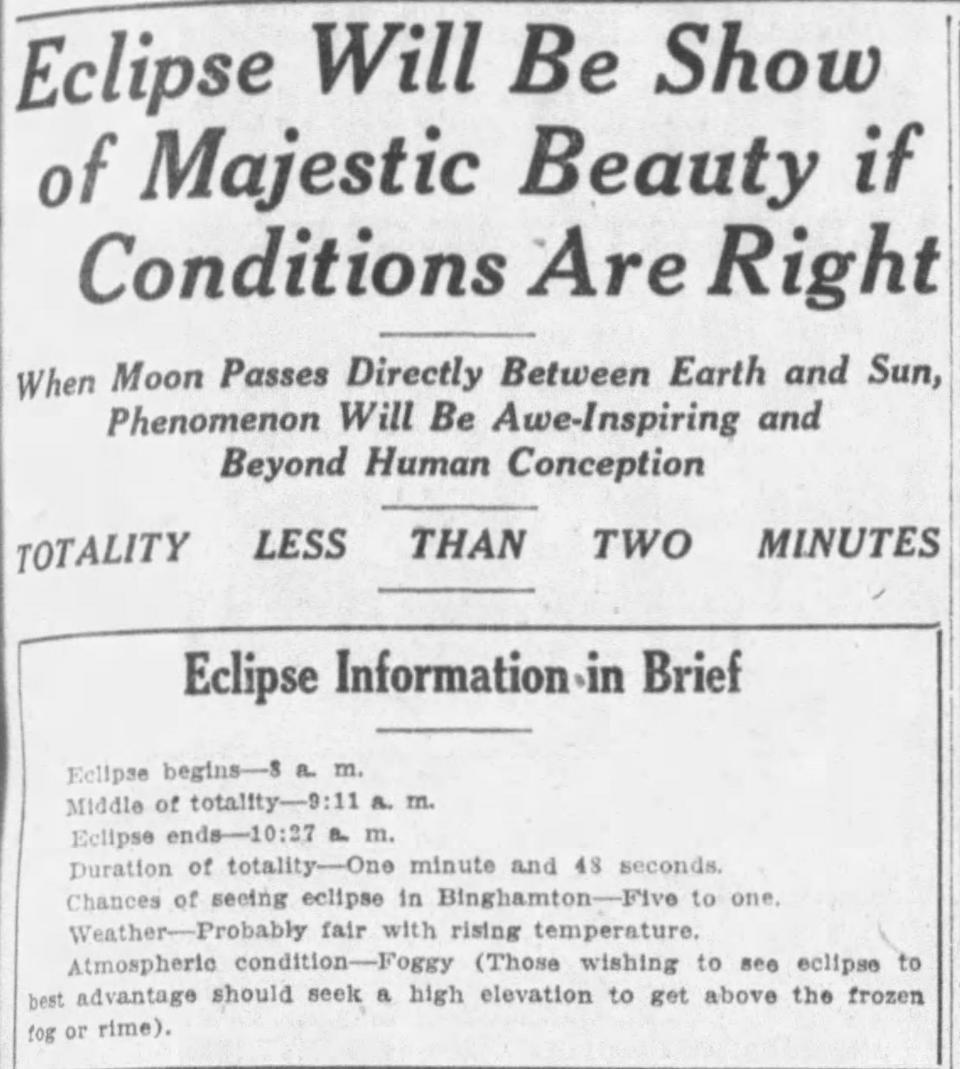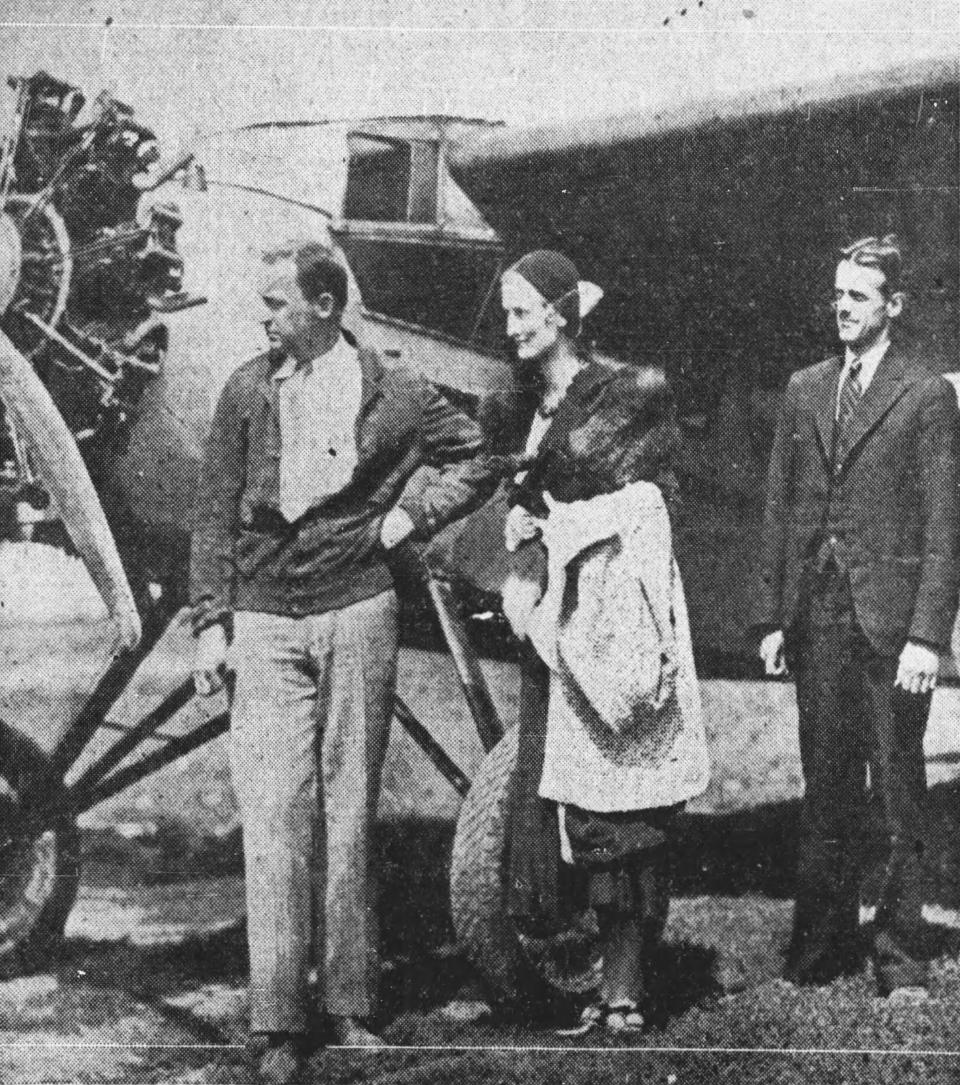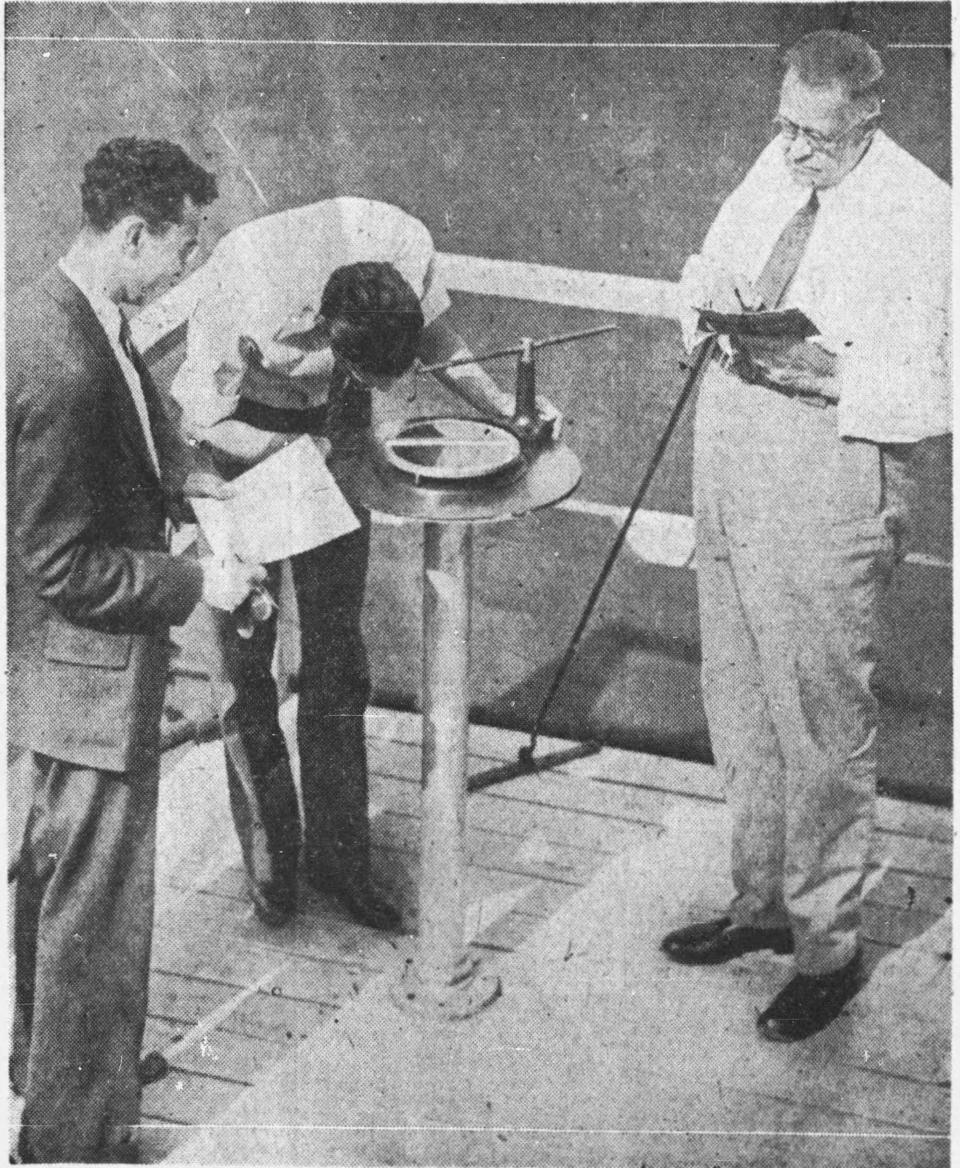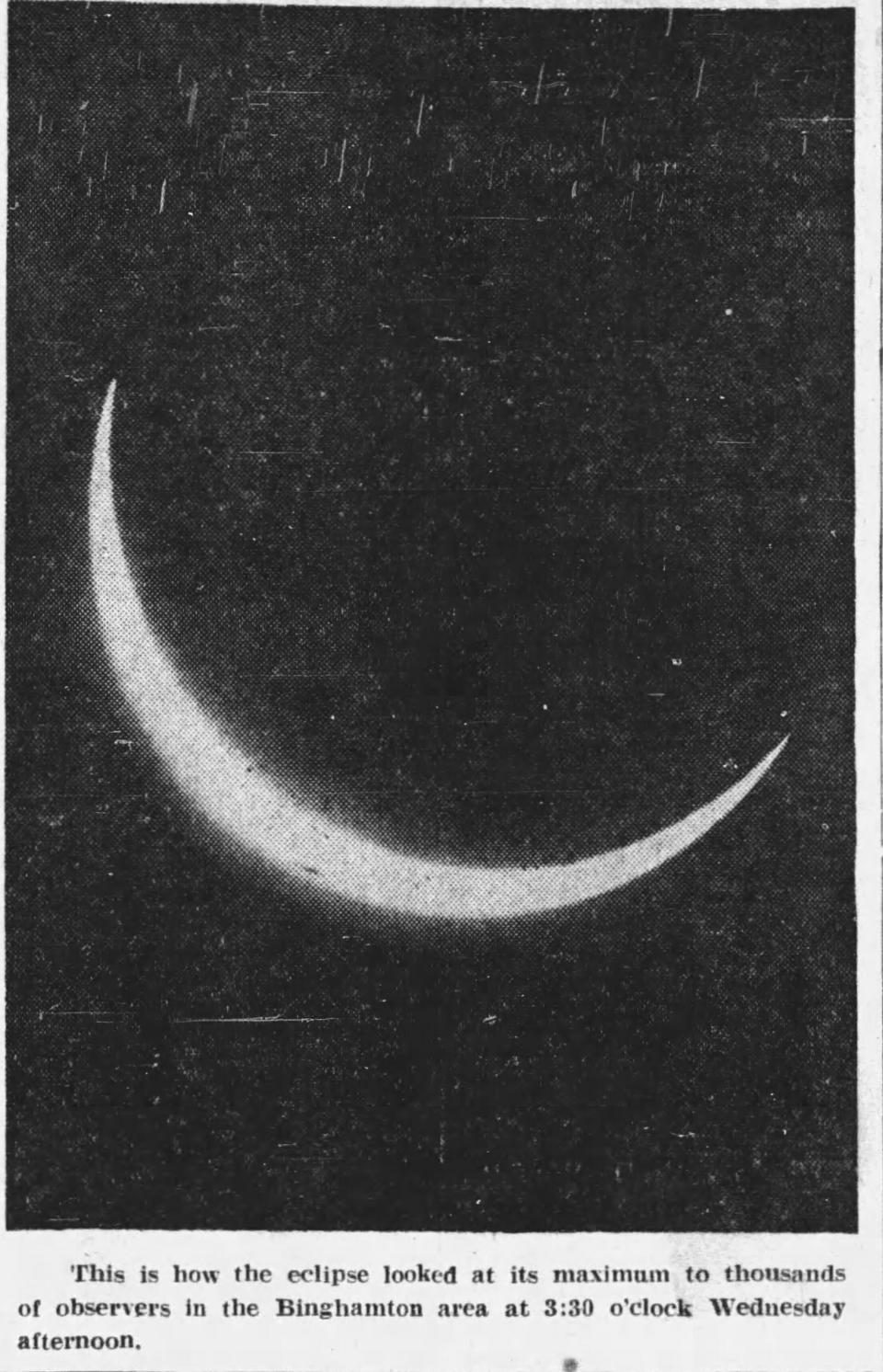When was the last eclipse in Binghamton? Past solar events in Broome County history
“O dark, dark, dark, amid the blaze of noon, irrecoverably dark, total eclipse; Without all hope of day!” - John Milton
Old words from Milton about an astronomical event that occurs on rare occasions. Yet, when it does happen, it brings reactions and emotions that stir the memories for centuries.
On April 8, 2024, there will be a total eclipse of the sun. This area, as well as much of the Northeast will be able to see much, if not all, of the eclipse as the moon passes between the earth and the sun.
It is a major event — the kind of stuff where people will have eclipse parties. This writer will be attending a museum conference in Albany, and the conference will literally stop to let the attendees witness this event, passing out protective eyewear and then having an after-eclipse party.
More: What time does April 8 solar eclipse peak in the Binghamton area? When, how to watch
While we have a better understanding of what and how such an eclipse occurs, not everyone always held a party during and after the event.
The last time there was a total eclipse of the sun only over the United States was in 1776. Imagine what our founding fathers thought about the darkness of the eclipse as they were trying to bring in the light of freedom.

There was another total eclipse of the sun over this region in 1808, and a subsequent one recorded in the Binghamton Press on Jan. 24, 1925. On that date there was a great deal of coverage of the event.
Those stories included a map showing the path and location of the eclipse. Binghamton was listed as being only one half mile from the middle of the path of totality. There was a story about Professor George Blakslee of the Yerkes Observatory about the eclipse and describing some of the photographs of that event that were taken in Binghamton.
One former Binghamton resident, William C. Hickox, who had moved from the area to live in Rochester, became an observer on behalf of the Yerkes Observatory which was connected with the University of Chicago. He had returned to Binghamton to be an official observer of the event.

The 1925 event was not the only solar eclipse the area, though. A near total eclipse traversed across this region on Aug. 31, 1932. On that occasion, members of the United States Weather Bureau set out instruments to create data about the eclipse. They set up the equipment on the roof of the post office located on Henry Street to measure the speed and totality of the eclipse.
In another effort to document the event, three people, Edwin A. Link, Jr, Marion Link (his wife), and George H. Spargo, who was a reporter for the Binghamton Press flew above the skies to document the solar eclipse.
More: Wegmans will close these New York stores during the April 8 eclipse
They took off that Wednesday afternoon in Link’s Cessna monoplane from Triple Cities Airport in the Town of Union. They flew west toward Elmira where the area was in a higher degree of totality than Binghamton.

When they were in the air about two and a half miles above the ground, Spargo snapped a number of photographs showing the “Ring of Fire” of the remaining light of the sun that could be observed. It was a daring and useful effort to document this rare event.
Aside from the Link effort, others in the area took note of the loss of light that day. Jail prisoners were allowed to observe the eclipse, officials at Ross Park Zoo noted the animals’ behavior when the sun left the skies for a few moments. Temperatures were noted as dropping during the eclipse.

One so-called clairvoyant, Clara Jackson Smith, was asked her opinion.
She believed that there would be disasters as a result of the eclipse, and that many lives would be lost as a result of the event. She said that the weather would be freakish and that winter may not come at its normal time. Smith went on describing that an ambassador would be assassinated before the end of the year, and the country would become involved in a great war. On that last prediction, she was correct as World War II would begin in Europe in 1939.
Here's hoping our eclipse is calmer.
This article originally appeared on Binghamton Press & Sun-Bulletin: 2024 eclipse: When were past solar eclipse events in Binghamton area?

